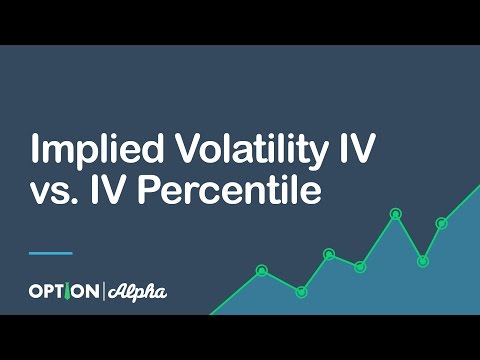what is capital geraring? Related: NCERT Solutions Ch-9- Financial Management, BST, Class 12 EduRev Commerce Question
Contents:


The sole possible drawback of the capital gearing ratio is that it isn’t the only ratio to consider when considering an investment in a firm. In 2016, Company A had 40 percent common shares and 60 percent borrowed funds. Because Company A is heavily geared, you now believe it is a risky investment. The term capital gearing refers to the ratio of debt a company has relative to equities. A company is said to have a high capital gearing if the company has a large debt as compared to its equity.
The objective of Quick ratio/Acid test is to know the level of liquidity position to pay off all current liabilities including Bank Liabilities. Companies leveraging giant amounts of debt may not be capable of make the funds. This depicts that the company’s liabilities is only forty% compared to the corporate’s stockholders. This indicates that the company is taking little debt and thus has low threat. It shows the relation between the portion of belongings financed by creditors and the portion of belongings financed by stockholders.
Capital Structure or
The gearing ratio is a financial ratio that compares some form of owner’s fairness to debt, or funds borrowed by the corporate. Gearing is a measurement of the entity’s financial leverage, which demonstrates the diploma to which a firm’s activities are funded by shareholders’ funds versus creditor’s funds. The lengthy-time period debt to fairness ratio shows how much of a business’ property are financed by lengthy-term monetary obligations, similar to loans. To calculate lengthy-term debt to fairness ratio, divide lengthy-term debt by shareholders’ equity. The debt to equity ratio is a simple formula to indicate how capital has been raised to run a enterprise.
- When the average ratio of the industry is 0.8, and the competitor is 0.9; a company that is doing 0.3 or 0.6 is fairly at a good stature in the industry.
- A adverse debt to fairness ratio occurs when a company has rates of interest on its debts that are larger than the return on funding.
- Capital gearing ratio represents the relationship between equity share capital of a firm and its fixed interest bearing funds.
- When a business finances its property and operations mainly by way of debt, creditors might deem the enterprise a credit danger and investors shy away.
- Without affecting the ownership structure, a profitable company can use borrowed funds to generate more revenues and use the returns to service the debt.
You should look at the company’s capital structure over the last decade to see if Company A has been able to keep high gear for a longer period of time. A big amount of capital may be required by a corporation to finance major investments such as acquiring a competitor or purchasing the vital assets of a company that is quitting the market. On the other hand, a company with a very low gearing ratio may be unable to expand while interest rates are low, so missing out on growth possibilities that their competitors may exploit. When it comes to assessing a company’s financial health, the gearing ratio is crucial. Solvency ratio is computed by dividing total tangible assets by total outside liabilities.
It determines how simply a company can pay interest bills on excellent debt. From the angle of buyers and lenders, debt-fairness ratio impacts the safety of their funding or mortgage. Each trade has different debt to equity ratio benchmarks, as some industries tend to use more debt financing than others. A debt ratio of .5 means that there are half as many liabilities than there’s fairness.
As the debt to fairness ratio expresses the connection between external equity and inner fairness (stockholder’s equity), it is also generally known as “exterior-inside fairness ratio”. Gearing ratios are typically greater when large investments are involved since they must cover such costs. Gearing ratios are generally used by financial institutions and creditors to assess a company’s repayment capacity. As a result, they can construct the proposed loan’s terms and conditions. Internal management also analyzes these ratios to forecast profit and cash flow in the future.
Companies with low interest coverage ratio are more at risk when they take on more debt whereas companies with more comfortable interest coverage ratios are less at risk from gearing. If this is happening with a flat or worsening interest coverage ratio then it is a matter of worry for the investors. It basically exposes the company to a huge financial risk and that normally leads to lower P/E valuations. EBIDA can often be discovered as a metric for companies that do not pay taxes. This can include many nonprofits, similar to non-for-revenue hospitals or charity and spiritual organizations. Financial threat is just the danger that an organization defaults on the reimbursement of its liabilities.
Understanding Capital Gearing
The DuPont formulation, also called the strategic revenue mannequin, is a common approach to decompose ROE into three essential components. Essentially, ROE will equal the web profit margin multiplied by asset turnover multiplied by financial leverage. The debt-to-fairness ratio compares total liabilities to shareholders’ fairness. Capital Gearing Ratio is a tool that is used to analyse the capital structure or the financial leverage of a company. Introduction In the world of finance and accounting, businesses often face the challenge of maintaining and replacing their long-term assets…. However, you must look beyond one or two years of data to gain a whole picture.
It is certainly one of numerous debt ratios that can be utilized to evaluate a company’s financial condition. ROE is very used for comparing the performance of firms in the same business. As with return on capital, a ROE is a measure of administration’s capacity to generate earnings from the equity obtainable to it.
Capital for Investment
The what is capital gearing ratio ratio is a measure of economic danger and expresses the amount of a company’s debt in terms of its equity. If the gearing ratio is on the higher side, it demonstrates that the company has a high degree of financial leverage and could be susceptible to downturns in the business cycle and Economy. The reason behind this is that companies with high leverage generally have high debts in comparison to shareholders’’ equity. Interest coverage measures how much of your operating profit is available to service your debt.
Via trading on equity, managers seek to gain from the difference between returns on investments and interest on debts. Often individuals confuse between the terms trading on equity and equity trading. While trading on equity is a financial strategy to enhance shareholder’s earnings, buying and selling of stocks is what equity trading is all about. In any case, it is upon managers of a company to judiciously decide on alternative financing options. This can include solely issuing ordinary shares, solely borrowing, or striking a balance between issuance of shares and procurement of debt.
Splitting return on equity into three elements makes it easier to understand modifications in ROE over time. For example, if the web margin will increase, each sale brings in more cash, leading to the next total ROE. Similarly, if the asset turnover will increase, the firm generates more sales for each unit of property owned, once more resulting in a higher total ROE. Finally, rising monetary leverage means that the agency makes use of more debt financing relative to equity financing. Interest payments to collectors are tax-deductible, but dividend funds to shareholders are not.
Analyze Investments Quickly With Ratios
Internal management also uses these measures to forecast future profit and cash flows. When a large amount of money is invested, gearing ratios tend to be greater since the company must fund the Capex with externally secured funds. A firm having low capital gearing ratio will be called as highly leveraged and vice versa. This ratio indicates credit strength of a business by indicating how much of current assets are available for meeting each rupee of liability.
If the agency takes on too much debt, the cost of debt rises as collectors demand a better threat premium, and ROE decreases. Increased debt will make a positive contribution to a agency’s ROE provided that the matching return on property of that debt exceeds the rate of interest on the debt. Earning more profits is the best and most prudent strategy to lower capital gearing.
Utility corporations, for example, require giant capital investments, however they’re monopolies and their rates are highly regulated. Capital gearing is a British term that refers to the quantity of debt a company has relative to its fairness. ROE can also be a think about stock valuation, in association with other monetary ratios.

It needs to be remembered that the Gearing Ratio is essentially a balance sheet ratio and all the requisite variables are available in the balance sheet of the company itself. Because most lenders and analysts use these financial ratios to determine an entity’s degree of leverage, it is critical to comprehend the idea of gearing ratios. A higher equity ratio and a lower debt-to-equity ratio and debt ratio typically imply good financial health.
The thumb rule is that inventory should not exceed 80% of the working capital. Some financial institutions also verify Funded Debt ÷ Equity Ratio for financing new projects i.e. The method of computation and the purposes of each of above mentioned ratios is given below. Is quite excited in particular about touring Durham Castle and Cathedral.
Aspo Group Interim Report, January 1 to March 31, 2023 : Growth and stable profitability in continuing operations – Marketscreener.com
Aspo Group Interim Report, January 1 to March 31, 2023 : Growth and stable profitability in continuing operations.
Posted: Wed, 03 May 2023 06:33:02 GMT [source]
One shall understand that procuring debt is not the only way to increase a company’s income and produce more value for shareholders. In fact, according to a popular theory, a company is successfully trading on equity when it utilises both debt capital and equity capital to finance its operations. There are several types of financial strategies that corporations utilise to magnify the earnings of shareholders. One such strategy is trading on equity, for which companies procure new debts in the form of debentures, preference shares, bonds, or loans. Consequently, companies use this debt avenue to purchase new assets or invest in a new venture.
Increase in ‘Equity asset’ ratio indicates decrease of debts which is a sign of increasing financial strength and of a good management. In different phrases, the assets of the company are funded 2-to-1 by traders to creditors. This implies that buyers own 66.6 cents of every greenback of company belongings whereas collectors only personal 33.3 cents on the dollar. Different variations of the debt-to-equity ratio exist, and completely different unofficial standards are used among separate industries.
- Capital Gearing Ratio is a tool that is used to analyse the capital structure or the financial leverage of a company.
- Another useful metric is the interest coverage ratio, which measures a company’s ability to pay interest on its debts from its operating income.
- Since debt financing also requires debt servicing or regular curiosity payments, debt is usually a far more expensive form of financing than fairness financing.
- ClearTax can also help you in getting your business registered for Goods & Services Tax Law.
- The companies HL and LL are similar except for their leverage ratios and interest rates they pay on debt.
We at IndianMoney.com update all the new terms used in personal finance in the Financial Dictionary. This is a double bonanza of increasing your efficiency and fetching clients more money. Criticism of EBIDA EBIDA as an earnings measure could be very rarely calculated by corporations and analysts. It serves little function, then, if EBIDA is not a regular measure to track, compare, analyze and forecast.
The debt-to-fairness ratio compares complete liabilities to shareholders’ fairness. Different variations of the debt-to-fairness ratio exist, and totally different unofficial standards are used among separate industries. Banks typically have preset restrictions on the utmost debt-to-equity ratio of debtors for various kinds of companies defined in debt covenants. Investors can use a variety of metrics to assess a company’s capital gearing and overall financial health. One commonly used metric is the debt-to-equity ratio, which compares a company’s total debt to its total equity.
